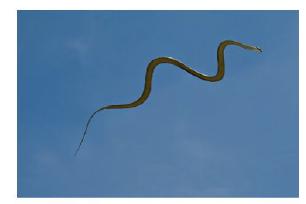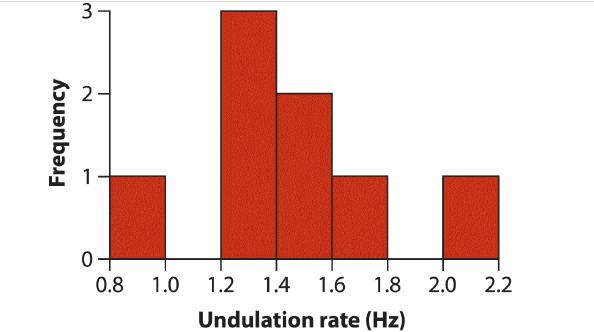The snake undulation data of Example 3.1 were measured in Hz, which has units of 1/s (cycles
Question:
The snake undulation data of Example 3.1 were measured in Hz, which has units of 1/s (cycles per second). Often frequency measurements are expressed instead as angular velocity, which is measured in radians per second. To convert measurements from Hz to angular velocity (rad/s), multiply by 2π , where , π=3.14159
a. The sample mean undulation rate in the snake sample was 1.375 Hz. Calculate the sample mean in units of angular velocity.
b. The sample variance of undulation rate in the snake sample was 0.105 Hz2. Calculate the sample variance if the data were in units of angular velocity.
c. The sample standard deviation of undulation rate in the snake sample was 0.324 Hz. Calculate the sample standard deviation in units of angular velocity. Provide the appropriate units with your answer.
Data of Example 3.1

When a paradise tree snake (Chrysopelea paradisi) flings itself from a treetop, it flattens its body everywhere except for the region around the heart. As it gains downward speed, the snake forms a tight horizontal S shape and then begins to undulate widely from side to side. These behaviors generate stability and lift, causing the snake to glide away from the source tree. By orienting the head and anterior part of the body, the snake can change direction during a glide to avoid trees, reach a preferred landing site, and even chase aerial prey. To better understand how lift is generated, Socha (2002) videotaped the glides of eight snakes leaping from a 10-m tower. Among the measurements taken was the rate of side-to-side undulation on each snake. Undulation rates of the eight snakes, measured in hertz (cycles per second), were as follows:

A histogram of these data is shown in Figure 3.1-1. The frequency distribution has a single peak between 1.2 and 1.4 Hz.

Step by Step Answer:

The Analysis Of Biological Data
ISBN: 9781319226237
3rd Edition
Authors: Michael C. Whitlock, Dolph Schluter





